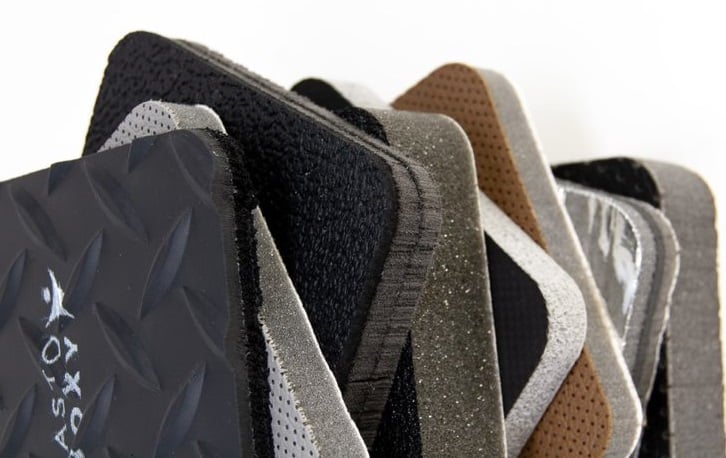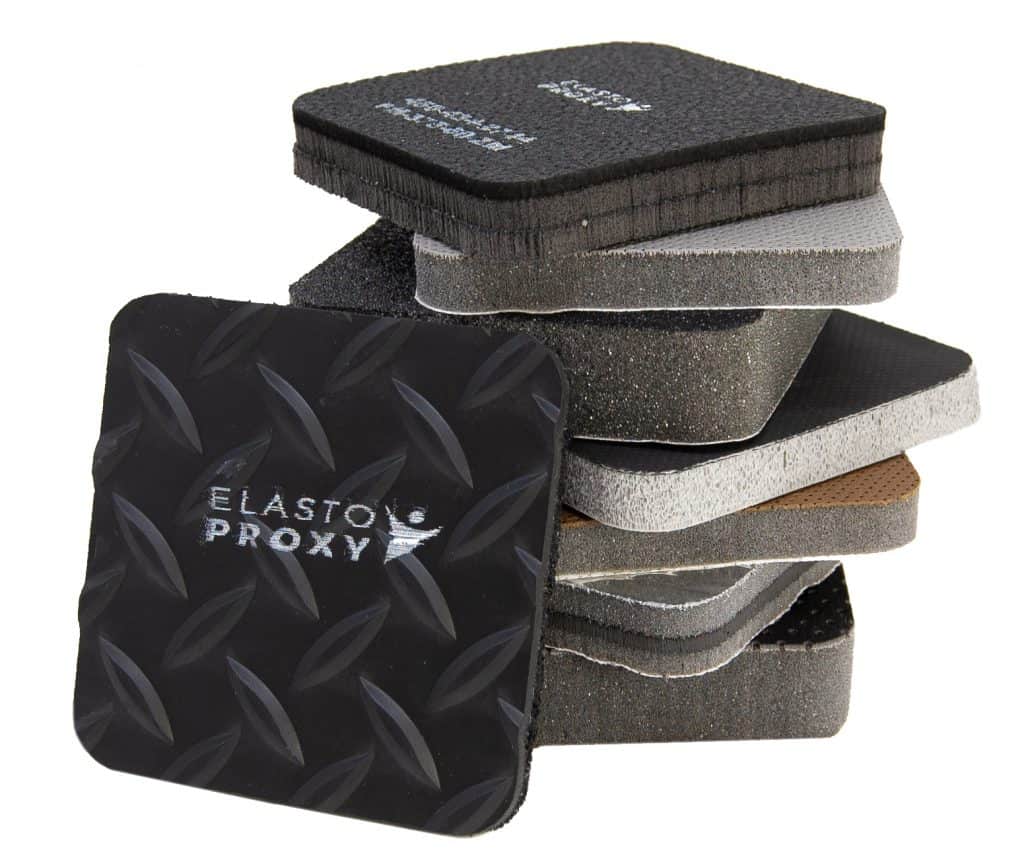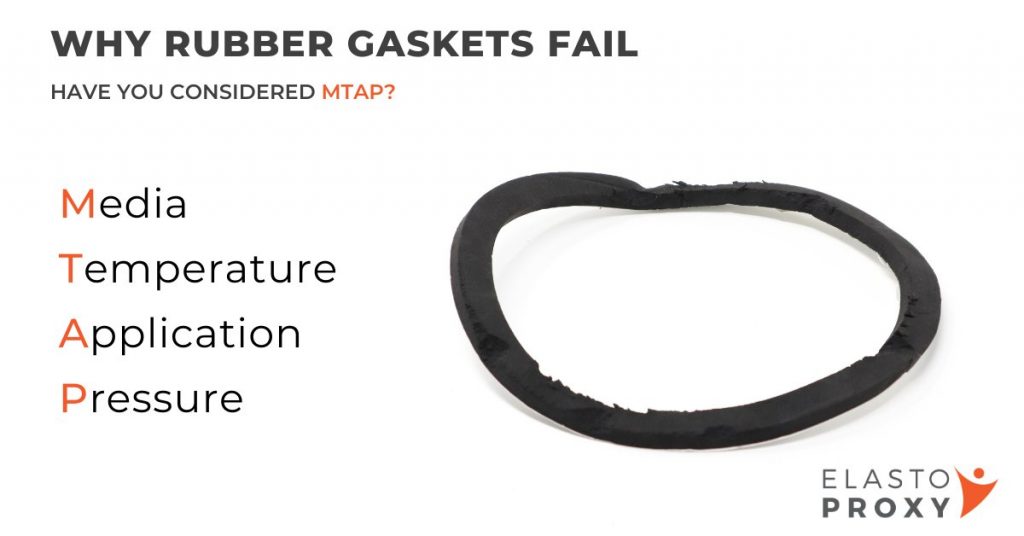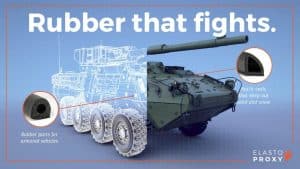Elasto Proxy makes noise barriers for manufacturers. We supply standard and custom products.
Noise barriers are a type of acoustic insulation that blocks unwanted sounds instead of absorbing or damping them. Known also as noise blockers or sound barriers, these products are made of dense rubber materials and are used at the source of a sound and along its path.
Keep reading to learn more about how noise barriers work, how they’re made, and the different types of products that are available. If you’re ready to request a quote or would like to discuss your specific application, contact Elasto Proxy.

How do noise barriers work?
Noise barriers physically prevent sound from passing-through ceilings, walls, floors, and other structures. That’s because sound travels in waves, and these waves can bounce off smooth, hard objects like how a rubber ball bounces off the ground.
What are noise barriers made of?
Noise barriers are usually made of vinyl, a dense rubber material that also provides strength, durability, and resistance to humidity and moisture. Some sound barriers are made of mass loaded vinyl (MLV) instead. MLV contains salt, sand, or tiny metal particles for added mass that promotes sound blocking.
Can you combine noise barriers with other materials?
Vinyl and MLV can be laminated to foams that absorb sounds and control vibrations. Melamine, an acoustical foam, is often used because it’s flexible, flame-resistant, and lightweight. Facing materials for noise blockers can attenuate frequencies, resist chemicals or abrasion, or support cleaning.
How are noise blockers made?
Noise-blocking materials are supplied as sheets or rolls in different lengths, widths, and thicknesses. Water jet cutting is used convert these stock materials to size, and without tooling. If the noise barrier is used with a sound absorber or sound dampener, all of these materials are laminated together and then cut.
What do these laminated products look like?
Sound blockers that are laminated to foams have a sandwich-style structure. When you hold the finished product from the side, you can see the individual layers. Depending on the application, several different acoustical materials may be used.

How are noise barriers mounted or applied?
Noise barriers can be supplied with pressure-sensitive adhesive (PSA) tape with a removable liner or backing. This PSA tape supports peel-and-stick installation for either temporary or permanent fastening. Typically, sound blockers are applied to the surfaces of walls, ceilings, vehicles, or equipment.
Where are sound barriers used in buildings?
Sound blockers for buildings are installed between walls or underneath flooring or carpeting. Often, the barrier material is sandwiched between a decoupler and a layer of acoustic foam. Decoupling causes the sound blocker and the acoustic foam to vibrate independently of each other.
Are there noise control standards?
Sound barriers have a sound transmission class (STC) that measures how much sound is blocked from getting through. Noise reduction is measured in decibels (dB) and used to calculate the effectiveness of products. There are also regulatory requirements about maximum decibels in the workplace.
Does MTAP matter in noise control?
MTAP, an acronym for media (M), temperature (T), application (A), and pressure (P) matters. For example, a sound blocker that’s right for a factory office might not be able to withstand the splash of automotive fluids in an engine compartment or the petroleum products used with industrial machinery.

What about flame resistance?
Depending on the materials of construction, noise barriers can meet UL 94 standards for flame resistance or mass transit standards for flame, smoke and toxicity (FST). Bombardier SMP-800C is an example of an FST standard.
What are some other applications for noise barriers?
In addition to buildings, buses and railcars, noise barriers are used in military land systems. When acoustic insulation is used as flooring in a vehicle such as a personnel transport, a non-slip surface and wear resistance may be required.
Who supplies custom noise barriers?
Elasto Proxy makes custom noise barriers at our headquarters near Montreal, Quebec, Canada. We can source noise blocking materials with a flame-laminated facing, and we can also laminate and water jet cut sandwich-style structures. For a peel-and-stick solution, we can apply PSA tape.
Ready to learn more? Talk to our team?










